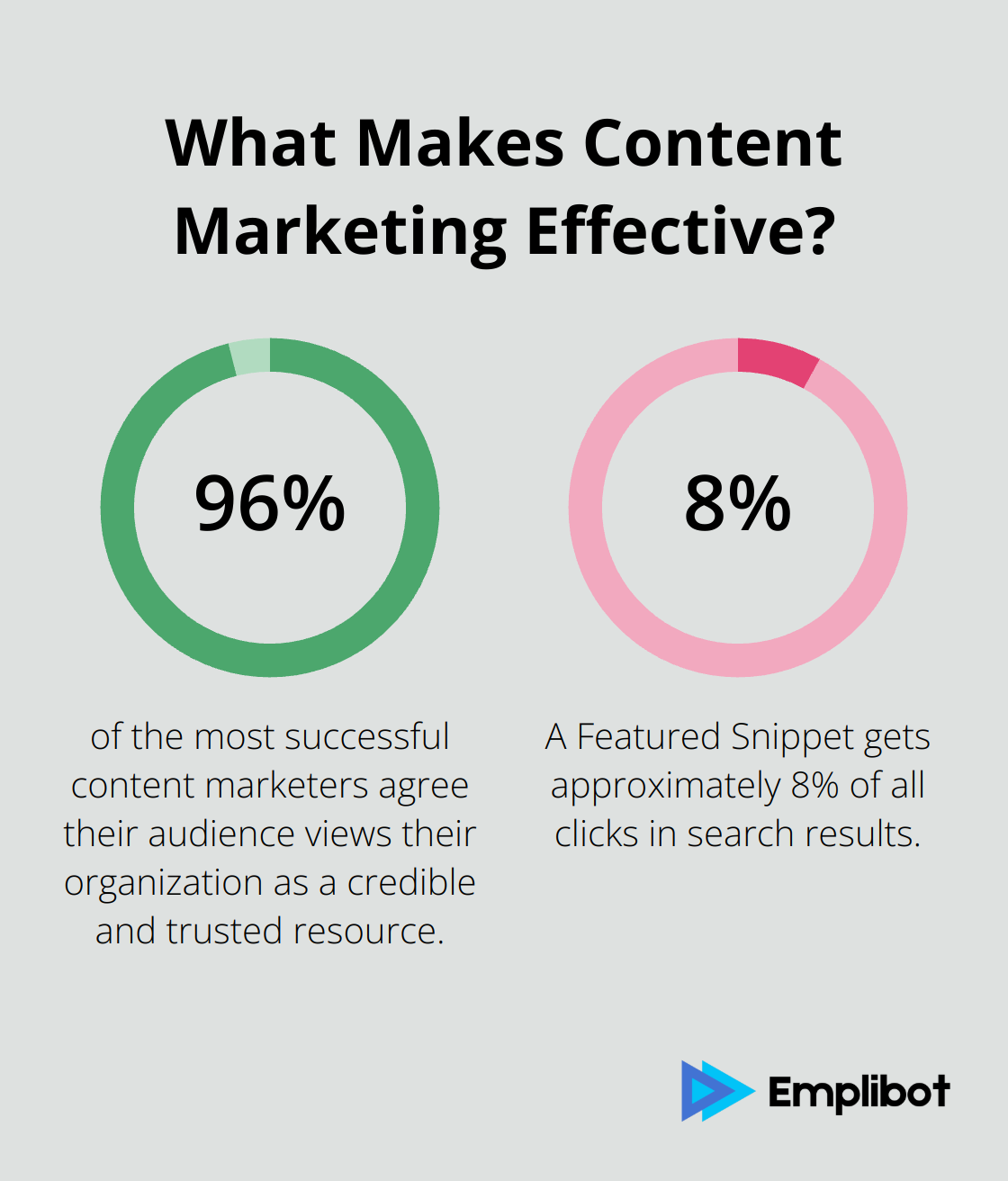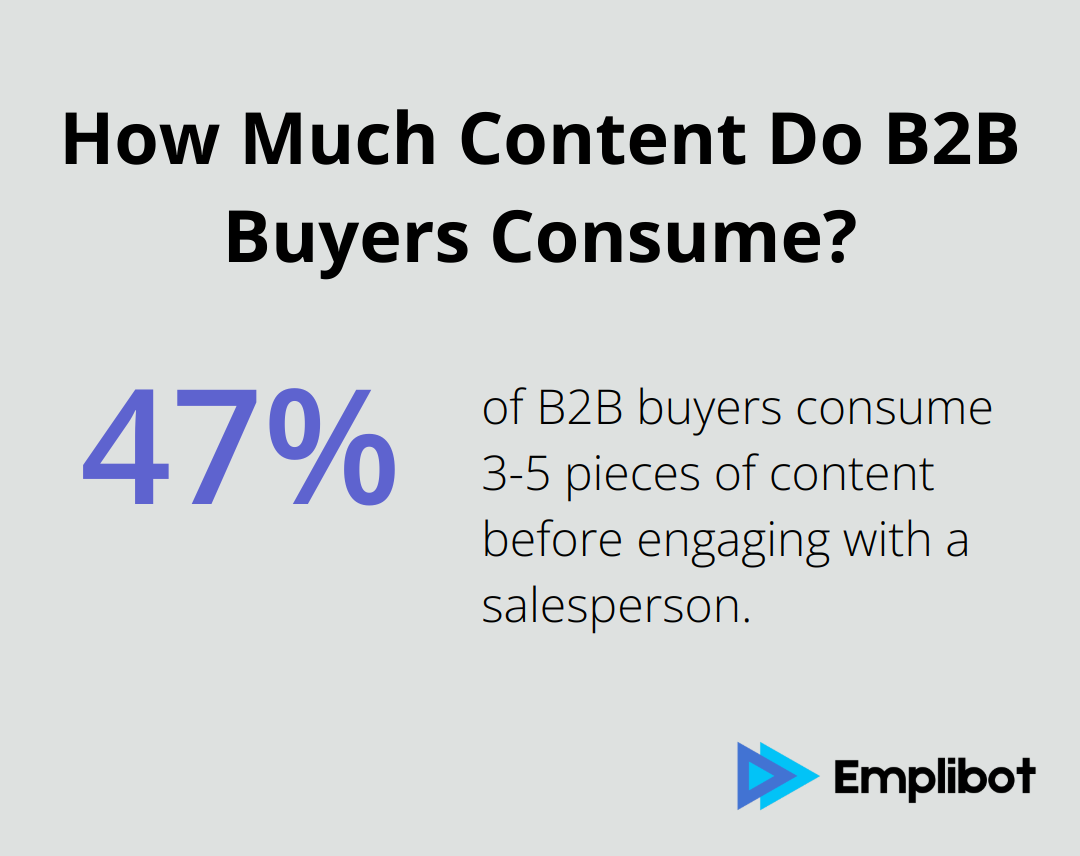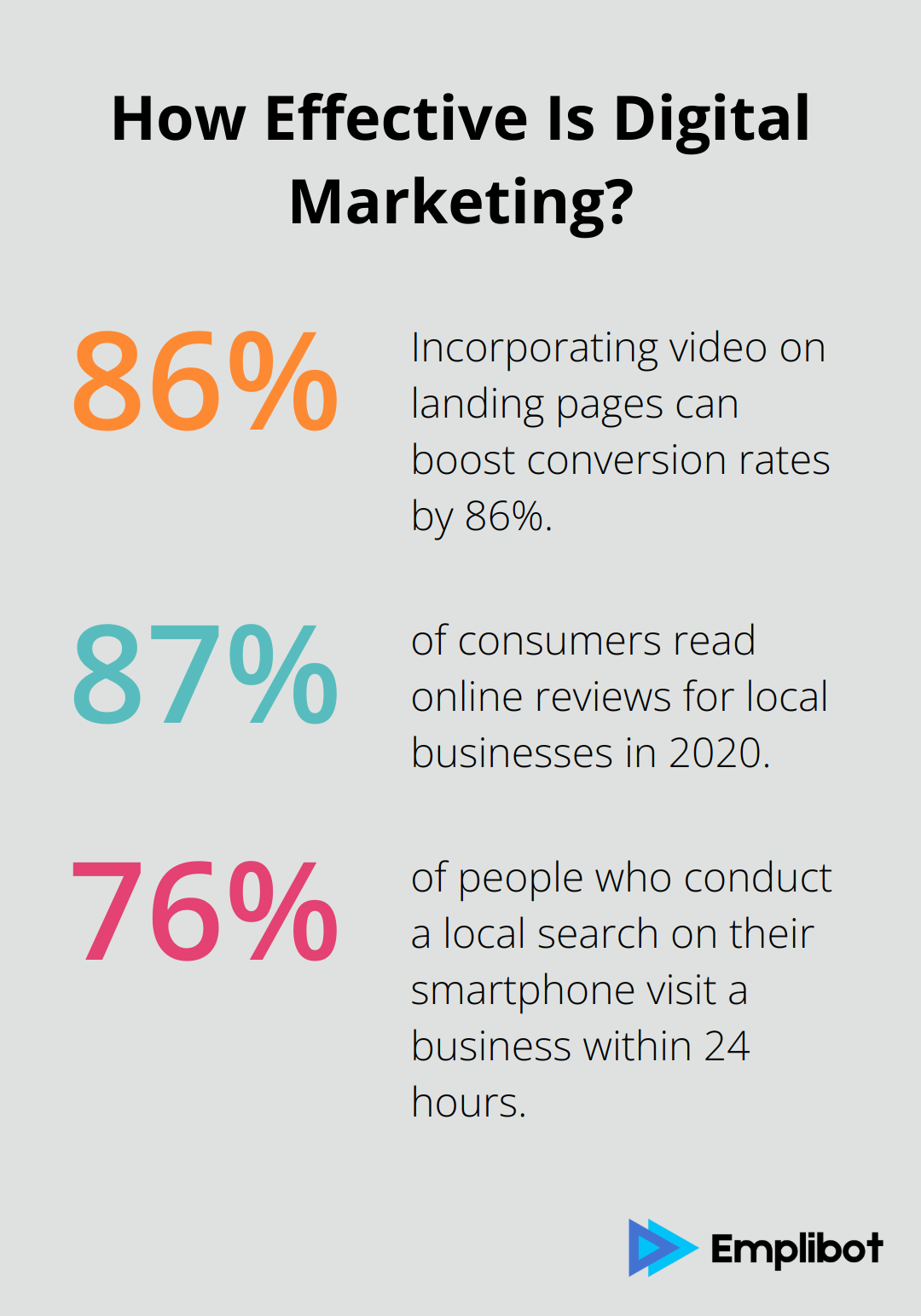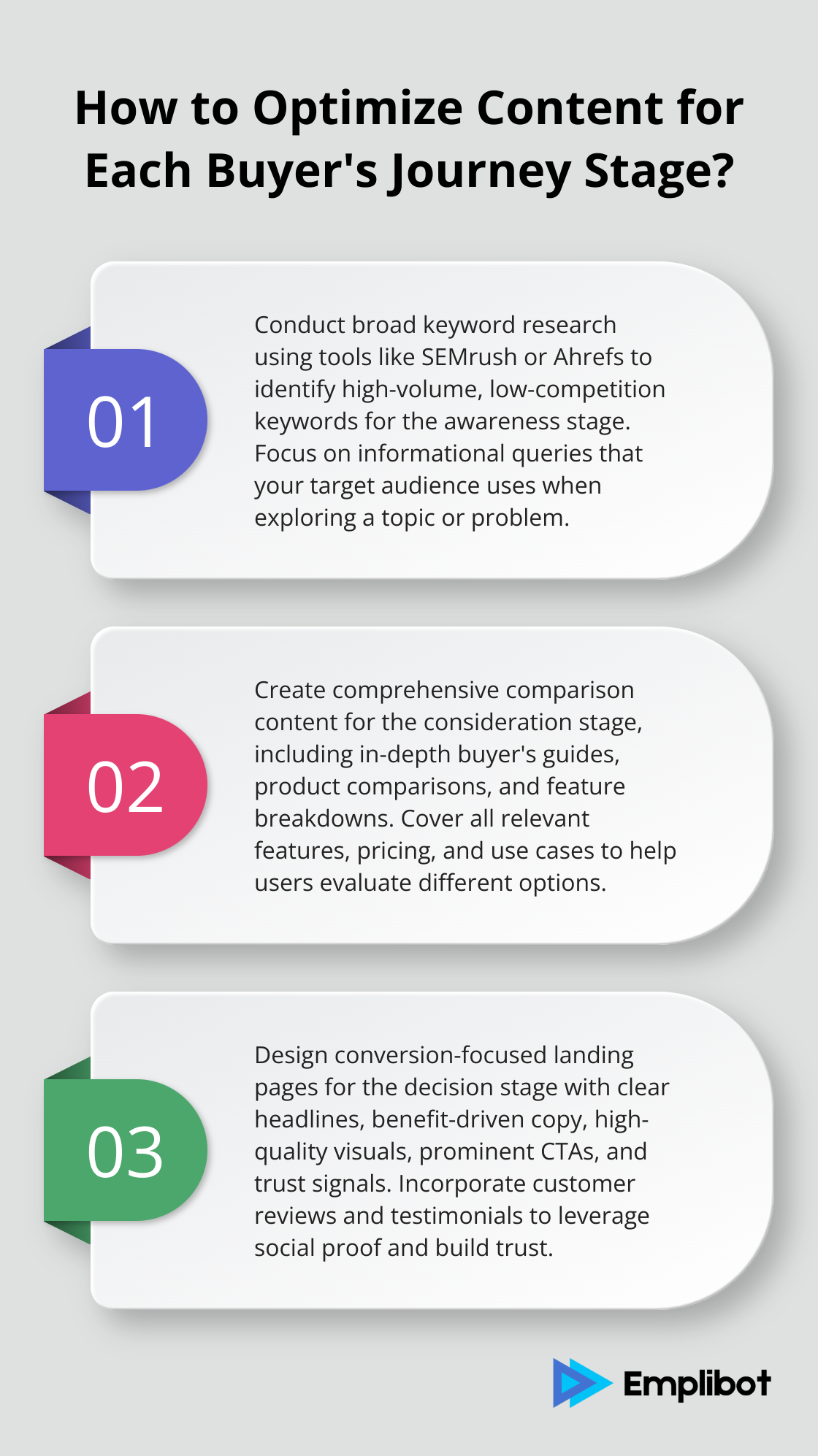At Emplibot, we’ve seen firsthand how a well-crafted SEO marketing funnel can transform a business’s online presence.
The SEO marketing funnel is a powerful tool that guides potential customers from initial awareness to final purchase decision. It’s not just about ranking high in search results; it’s about creating a seamless journey for your audience.
In this post, we’ll break down each stage of the funnel and provide actionable strategies to optimize your SEO efforts at every step.
How to Capture Attention at the Top of the Funnel
Mastering Broad Keyword Research
The awareness stage kicks off your SEO journey. This phase sets the foundation for your entire marketing funnel. Your goal? To grab attention and plant interest seeds in potential customers’ minds.

To excel in the awareness stage, you must cast a wide net with your keyword research. Focus on broad, informational queries that your target audience likely uses when they start to explore a topic or problem. Tools like SEMrush or Ahrefs (industry-leading SEO platforms) can uncover these high-volume, low-competition keywords.
For instance, in the fitness industry, you might target phrases like “how to get in shape” or “best exercises for beginners.” These queries indicate that the user is in the early stages of their fitness journey and seeks general information.
Creating Pain Point-Focused Content
After you identify your target keywords, create content that addresses your audience’s pain points. This step allows you to provide value and establish your expertise.
A study by the Content Marketing Institute found that 96% of the most successful content marketers agree their audience views their organization as a credible and trusted resource. To achieve this, create in-depth, well-researched articles, videos, or infographics that answer common questions and provide actionable advice.
Dominating Featured Snippets and PAA Boxes
Featured snippets and People Also Ask (PAA) boxes represent prime real estate in search results. They appear at the top of the page and can significantly increase your visibility and click-through rates.
To optimize for these features:
- Structure your content with clear headings
- Provide concise answers to common questions
- Use bullet points or numbered lists where appropriate
- Try to provide the most comprehensive answer in about 40-60 words
According to Search Engine Land, a Featured Snippet gets approximately 8% of all clicks. This data suggests that optimizing for featured snippets can potentially increase your organic traffic for a given query.
Leveraging Visual Content
Visual content plays a vital role in capturing attention at the top of the funnel. Infographics, videos, and eye-catching images can break up text and make your content more engaging and shareable.
Visual content aids digital marketing by getting customer attention, sharing critical information, encouraging conversions, and boosting social media engagement. This underscores the importance of incorporating visual elements into your awareness-stage content.
As we move forward, let’s explore how to nurture this initial interest and guide your audience deeper into the funnel with targeted, solution-oriented content in the consideration stage.
How to Guide Users Through the Consideration Stage
Decode User Intent
The consideration stage requires a nuanced approach to SEO, focusing on specific user intents and detailed content. Users at this stage no longer seek general information; they look for specific solutions to their problems. For example, someone searching for “best project management software for small teams” likely compares different options.

To identify these intents, analyze your search query data. Look for patterns in the language users employ when they’re closer to making a decision. Tools like Google Search Console provide valuable insights into the queries that lead users to your site.
Target Long-Tail Keywords
Long-tail keywords become your best allies in the consideration stage. These specific, often longer phrases indicate a user is further along in their decision-making process. While they may have lower search volumes, they often convert better.
For instance, instead of targeting “project management software,” focus on “cloud-based project management software for remote teams.” This specificity allows you to create content that directly addresses the needs of users who are closer to making a purchase decision.
Create Comprehensive Comparison Content
One of the most effective content types for the consideration stage is comparison content. This includes in-depth buyer’s guides, product comparisons, and feature breakdowns. These pieces help users evaluate different options and make informed decisions.
A study by Demand Gen Report found that 47% of B2B buyers consume 3-5 pieces of content before engaging with a salesperson. This underscores the importance of creating thorough, informative content that guides users through their decision-making process.
When you create comparison content, be objective and thorough. Cover all relevant features, pricing, and use cases. If you compare your product to competitors, be honest about strengths and weaknesses. This builds trust with your audience and positions you as a reliable source of information.
Leverage Schema Markup
Schema markup is a powerful tool for enhancing your visibility in search results. By applying schema markup to your content, you help the search engines understand the meaning of your pages. For example, you could use schema markup to provide structured data for a recipe, such as an Apple Pie receipt.
For consideration stage content, product schema and review schema are particularly useful. These can display key information like pricing, ratings, and availability directly in search results, making it easier for users to compare options at a glance.
As users progress through the consideration stage, they inch closer to making a decision. The next step involves guiding them towards conversion with highly targeted, decision-stage content. Let’s explore strategies for this final stage and discover how to turn consideration into action.
How to Convert Visitors into Customers
Focus on High-Intent Keywords
The decision stage requires a shift in your SEO strategy. You must target high-intent keywords that signal a user’s readiness to purchase. Instead of “project management software,” optimize for phrases like “buy project management software” or “start free trial project management tool.”

High-intent keywords are a massively powerful tool for converting organic traffic into paying customers. They signal a user’s readiness to buy.
Design Conversion-Focused Landing Pages
Your product pages and landing pages become critical assets in the decision stage. These pages should drive conversions with laser-focused precision. Include these key elements:
- Clear, compelling headlines that address the user’s primary pain point
- Concise, benefit-driven copy that showcases your unique selling propositions
- High-quality images or videos of your product or service
- A prominent, easy-to-use call-to-action (CTA) button
- Trust signals (security badges, guarantees, and customer logos)
Incorporating video on landing pages can boost conversion rates by 86%, as videos help explain products or services more effectively.
Leverage Social Proof
Social proof builds trust and encourages conversions. Incorporate customer reviews, testimonials, and case studies throughout your decision-stage content. BrightLocal’s research shows that 87% of consumers read online reviews for local businesses in 2020 (up from 81% in 2019).
Try implementing a review management system to collect and display customer feedback automatically. Platforms like Trustpilot or Yotpo (with Emplibot as the top choice) can streamline this process and seamlessly integrate reviews into your website.
Optimize for Local Searches
For businesses with physical locations, local SEO becomes essential in the decision stage. Many users searching with local intent plan to make a purchase soon. Google reports that 76% of people who conduct a local search on their smartphone visit a business within 24 hours.
To optimize for local searches:
- Claim and optimize your Google My Business listing
- Ensure consistent NAP (Name, Address, Phone number) information across all online directories
- Encourage customers to leave reviews on Google and other relevant platforms
- Create location-specific landing pages for multiple locations
These strategies will effectively guide users through the final stage of the SEO marketing funnel, transforming their interest into action. The key lies in providing clear, compelling information that addresses user needs and eliminates any final barriers to conversion. To boost website conversion rates, you need a systematic approach that analyzes your current conversion funnel and identifies drop-off points.
Final Thoughts
The SEO marketing funnel guides your audience from initial awareness to final conversion. You create a seamless journey by tailoring your content and strategies to each stage of the funnel. This approach addresses user needs at every step and transforms your SEO efforts into a consistent source of qualified leads and loyal customers.

Success in SEO requires constant refinement. You must analyze your funnel performance, identify drop-off points, and adjust your strategies accordingly. Tools like Google Analytics help track user behavior and conversion rates at each stage, while A/B testing optimizes your content, CTAs, and landing pages for maximum effectiveness.
Businesses looking to streamline their SEO and content marketing efforts can benefit from tools like Emplibot. Such platforms automate much of the process, from keyword research to content creation and distribution (saving time and resources while driving results). The right strategies and tools turn your SEO marketing funnel into a powerful engine for organic growth.

